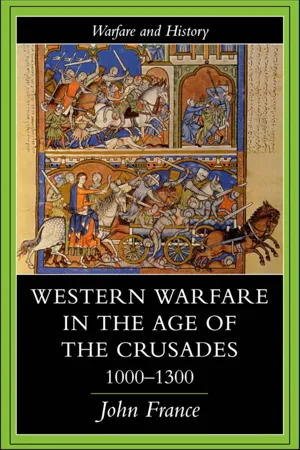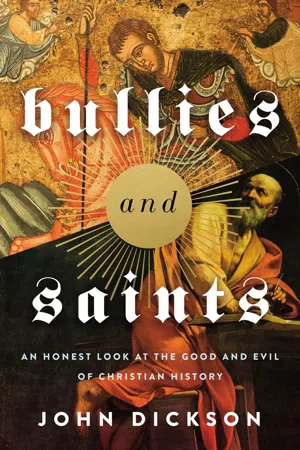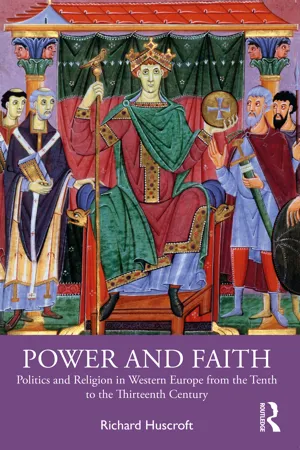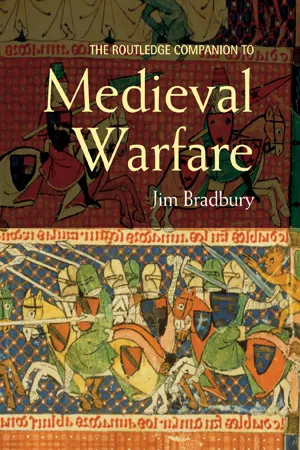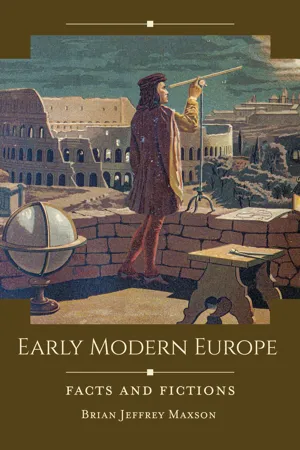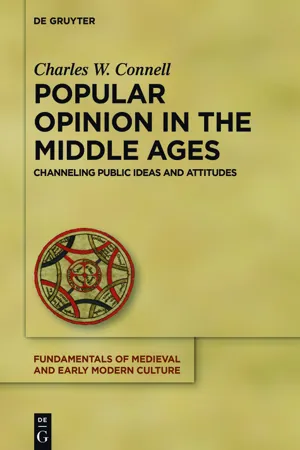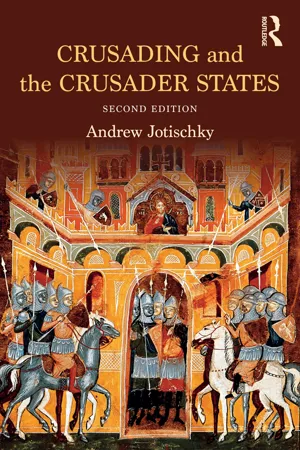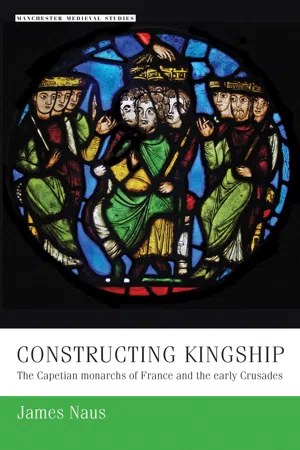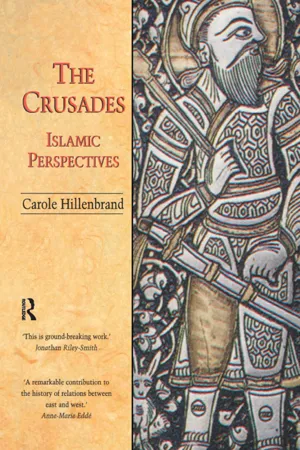History
Second Crusade
The Second Crusade was a military campaign launched by European Christians in 1147 in response to the fall of the County of Edessa to the Muslims. Led by King Louis VII of France and Emperor Conrad III of Germany, the crusade ultimately ended in failure, with the Christian forces suffering significant losses. This event marked a turning point in the Crusades and had lasting implications for the Christian-Muslim relations in the region.
Written by Perlego with AI-assistance
Related key terms
10 Key excerpts on "Second Crusade"
- John France(Author)
- 2020(Publication Date)
- Routledge(Publisher)
Uncertain and often divided leadership was inevitably accompanied by uncertain purpose. Much of the success of the First Crusade was due to the limited but specific objective – Jerusalem. When its leaders were at their most ignorant and hesitant, their army was large enough to overcome by sheer weight of numbers the Sultanate of Nicaea. Very quickly, they took the measure of their enemies and maximized their strength by an adroit diplomacy, winning allies and buying off enemies by pacts of friendship which they were perfectly prepared to break. This diplomatic aspect to their crusade was vital, for although the Middle East was fragmented, many of its component parts were more than a match in military terms for the invaders. What the Muslim powers did not understand was that the invaders posed a threat to their very existence. Once that was understood, the scale and quality of their resistance to new crusades was enormously enhanced.The Second Crusade simply had no clear purpose: the occasion of its calling was the fall of Edessa to Zengi, but this had not in itself stirred the West; it was only the incredible activity of St Bernard that created what became a general onslaught upon the non-Catholics who confronted Europe. This vast concept never generated any central control and Louis VII, the only leader to arrive in Jerusalem with an army, had little idea what to do with it. Richard of England, as we have noted, had a crusading strategy – to seize Egypt, the real heart of Saladin’s power – but the religious goal of the expedition (and probably the personal animosity which Richard so obviously generated) proved too strong. But the problems of the Third Crusade were pondered. The union of Syria and Egypt under Saladin had caused the fall of the Latin Kingdom, but the quarrels of his descendants, the Ayyubids, created opportunities which could be exploited. The leaders of the Fourth Crusade made a secret decision to attack Egypt. This was actually carried out by the Fifth Crusade, probably acting in accord with the decisions of the Fourth Lateran Council, although it was their decision to attack Damietta rather than Alexandria. Once the city had fallen, the crusade was for long paralysed by failures of command, and it was probably popular demand for action that led to its ultimate failure near Mansourah.11- John France(Author)
- 2002(Publication Date)
- Routledge(Publisher)
Uncertain and often divided leadership was inevitably accompanied by uncertain purpose. Much of the success of the First Crusade was due to the limited but specific objective - Jerusalem. When its leaders were at their most ignorant and hesitant, their army was large enough to overcome by sheer weight of numbers the Sultanate of Nicaea. Very quickly, they took the measure of their enemies and maximized their strength by an adroit diplomacy, winning allies and buying off enemies by pacts of friendship which they were perfectly prepared to break. This diplomatic aspect to their crusade was vital, for although the Middle East was fragmented, many of its component parts were more than a match in military terms for the invaders. What the Muslim powers did not understand was that the invaders posed a threat to their very existence. Once that was understood, the scale and quality of their resistance to new crusades was enormously enhanced.The Second Crusade simply had no clear purpose: the occasion of its calling was the fall of Edessa to Zengi, but this had not in itself stirred the West; it was only the incredible activity of St Bernard that created what became a general onslaught upon the non-Catholics who confronted Europe. This vast concept never generated any central control and Louis VII, the only leader to arrive in Jerusalem with an army, had little idea what to do with it. Richard of England, as we have noted, had a crusading strategy - to seize Egypt, the real heart of Saladin’s power - but the religious goal of the expedition (and probably the personal animosity which Richard so obviously generated) proved too strong. But the problems of the Third Crusade were pondered. The union of Syria and Egypt under Saladin had caused the fall of the Latin Kingdom, but the quarrels of his descendants, the Ayyubids, created opportunities which could be exploited. The leaders of the Fourth Crusade made a secret decision to attack Egypt. This was actually carried out by the Fifth Crusade, probably acting in accord with the decisions of the Fourth Lateran Council, although it was their decision to attack Damietta rather than Alexandria. Once the city had fallen, the crusade was for long paralysed by failures of command, and it was probably popular demand for action that led to its ultimate failure near Mansourah.11- eBook - ePub
Bullies and Saints
An Honest Look at the Good and Evil of Christian History
- John Dickson(Author)
- 2021(Publication Date)
- Zondervan(Publisher)
Holy Wars from the 1000s to the 1200s Lest we get on our high horse and think this is unique to some other place, remember that during the Crusades people committed terrible deeds in the name of Christ. —PRESIDENT BARACK OBAMA, 2015Ihave already talked about the First Crusade in some detail. Its themes and aims can, to some degree, stand as the model for later Crusades. It also represents a pivot point in the history of Christianity.First Crusade (1096–99)
Before Pope Urban II’s preaching campaign of 1095–96, warfare had an ambiguous status in Christian teaching. It was sometimes viewed as a necessary evil in a fallen world. And sometimes—especially in the early centuries—it waswholly rejected as a contradiction of the Gospel demand: “Love your enemies, do good to those who hate you” (Luke 6:27). I will discuss the backstory to Christian “sacred violence” later. For now, it is perhaps worth noting that historians typically speak about five different Crusades. This is, of course, a matter of convenience, an easy way to organise our thoughts on this subject. People in, say, the year 1203 did not talk about “Heading off to the Fourth Crusade”! Still, it is sometimes helpful to make our thoughts about history neater than the history itself.Several armies of European volunteers, amounting to something like one hundred thousand men, heeded the call of Pope Urban II to assist the Christian Byzantine emperor Alexius I against Muslim aggression. They hoped to protect Constantinople and win back Jerusalem for Christ. The campaign was a stunning success, from the Crusaders’ point of view. Even though only ten to fifteen thousand men reached Jerusalem in 1099, they were able to recapture the Holy City in a matter of weeks.Part of the First Crusade’s spiritual force, if I can call it that, came from a charismatic monk known as Peter the Hermit. His dishevelled appearance obscured a keen talent for recruitment and the management of soldiers, as well as a fiery preaching style. It is unclear whether he was the pope’s appointee or just a successful independent zealot who supported the cause. He rallied up to thirty thousand men from France and Germany, both peasants and some elites. He personally led them toward the Holy Land, across the Rhineland in central Germany, down the Danube River to the Balkans, across to Constantinople, and then on toward Jerusalem via Syria. “His message was revivalist,” explains Oxford’s Christopher Tyerman, “peppered with visions and atrocity stories.”1 Peter himself was the source of several atrocities. As he marched through the Rhineland, he and his men slaughtered Jewish communities, partly for their supposed responsibility for the death of Christ centuries earlier and partly for their alleged complicity in recent Muslim attacks on Christian sites in Jerusalem (more perversely, it may also have just been fighting practice).2 Anti-Semitism had a long history in Christianity, going back at least as far as the fourth century, but it rarely took the form of Peter’s full-scale pogroms in 1096. There were massacres and/or forced conversions in Mainz, Cologne, Regensburg, and Prague. The majority of armies organised by Pope Urban apparently did not participate in such violent persecutions of Jews. And, curiously, various otherChristian armies attacked and defeated some of Peter’s men for their indiscriminate violence.3 But Peter remained a major figure in the First Crusade, even preaching a sermon—a pregame pep talk—on the Mount of Olives overlooking Jerusalem on the eve of the sacking of the city.4 - eBook - ePub
Power and Faith
Politics and Religion in Western Europe from the Tenth to the Thirteenth Century
- Richard Huscroft(Author)
- 2023(Publication Date)
- Routledge(Publisher)
The remarkable coda to the Fifth Crusade followed a few years later. Frederick II had taken the cross when he was crowned king of Germany in 1215, and he had restated his desire to go on crusade after his imperial coronation in 1220. But his failure to join the armies of the Fifth Crusade in Palestine or Egypt had been a major factor in that expedition’s collapse, and in the end, Frederick did not give serious attention to his crusading promises until 1225 when he married Yolanda de Brienne, the daughter and heir of King John of Jerusalem. Having then had himself crowned king of Jerusalem on Sicily whilst his new father-in-law was still alive and well, Frederick set off for the Holy Land in 1227 only to fall ill and delay his expedition once again. This was too much for the exasperated Pope Gregory IX (1227–41), who excommunicated the emperor. Having recovered, however, Frederick pressed on and arrived at Acre in September 1228. A few months later, in February 1229, he reached a negotiated settlement known as the Treaty of Jaffa with the sultan al-Kamil. A ten-year truce was agreed, and al-Kamil conceded that the Christians could retake control over Jerusalem (except Temple Mount), Bethlehem and the corridor of land linking them both to the sea, Nazareth and parts of Galilee, Toron and Sidon. On 18 March 1229, Frederick solemnly wore his imperial crown in the Church of the Holy Sepulchre. On the face of it, Frederick had achieved by diplomacy what the great armies of the Third, Fourth and Fifth Crusades had failed to achieve by force. But matters were not as simple as this. Frederick’s actions and motives were seriously questioned by the pope, the barons of the Kingdom of Jerusalem and the Military Orders, all of whom had expected Frederick to challenge al-Kamil much more forcefully. At the same time, Frederick’s status as an excommunicated king only further clouded assessments of what he had done, whilst his behaviour during the crusade was perceived as high-handed by many: as he left Acre in May 1229 he was pelted with offal by abusive crowds. More broadly, the lands he had gained, particularly Jerusalem itself, could easily be retaken by al-Kamil’s forces whenever the sultan thought of doing so, and they were indefensible without long-term political and military commitment from the west. There was no sign Frederick was interested in giving this kind of support. Indeed, his reasons for acting as he did derived more from a desire to embellish his imperial prestige and bolster his authority in the west than they did from an urge to recover the Holy Land for Christianity. There appeared to be little either spiritual or penitential in Frederick’s approach, and more expeditions to the East would be needed to add substance to his hollow victory.Closer to Home: Crusading in Europe and the Battle with Heresy
For nearly 50 years after the capture of Jerusalem by the First Crusaders in 1099, crusading was all about the Holy Land. The papacy acknowledged the religious importance of what was happening in Iberia, but it was above all armed pilgrimages to Outremer which were needed to reclaim and then protect the Christian territories which had been seized by Muslim invaders – they were acts of self-defence. From the 1140s onwards, however, these views began to evolve, and the original crusading ideal of fighting as a soldier of Christ in the East for the remission of sins was redefined. Soon, military campaigns intended to conquer lands in north-eastern Europe were officially transformed into wars of conversion, and eventually Christian armies were being deployed within Europe against those categorised as heretics. In the second half of the twelfth century, mainstream Christianity became more muscular, more aggressively militant and more associated with armies and war. Issues of faith were certainly at stake in these conflicts, but increasingly they also contributed to the formation of a new political order in Europe as secular and ecclesiastical rulers used the war against heresy to increase their own power and prestige. - eBook - ePub
- Jim Bradbury(Author)
- 2004(Publication Date)
- Routledge(Publisher)
Once it included only certain numbered expeditions to the Holy Land, ending with the fall of Acre in 1291. Now it involves the study of various additional expeditions to the Middle East, crusades within Europe for example against pagans in the north or heretics in France, and is carried on into the early modern world and later, for example to the fall of Malta. Details of military events appear in the relevant geographical region, thus the northern crusades appear in Section 6, the Reconquista in Section 11 and so on. Here the main emphasis is on crusades to the Holy Land. The main drive of the crusading movement was towards the Middle East, against Islamic control of Christian Holy Places, in particular of Jerusalem. It is generally agreed that the Crusades began with Pope Urban II’s appeal at Clermont-Ferrand in 1095, followed by expeditions to the Middle East from 1096. Urban’s interest was inspired by Byzantine appeals for aid against the Turks. Before this the pilgrimage movement from the west to the Holy Places had been growing. It is arguable that the war against Islam in Spain was an early example of crusading. Urban’s appeal led to the first military effort in the Middle East, the so-called ‘People’s Crusade’. It involved several groups making their own way to the Holy Land under Peter the Hermit, Walter the Penniless (a knight), Gottschalk, Folkmar and Count Emich of Leiningen. Massacred Jews in Europe were the first victims of the crusaders under Count Emich. A thousand Jews were killed in Mainz, 800 in Worms. The People’s Crusade was inspired by Peter the Hermit. It attracted many non-knightly individuals, mostly lacking military training. These poorly organised treks ended in disaster at points along the way. Hungary proved difficult to pass through. The Byzantine emperor, Alexius I, moved crusaders on as quickly as possible. Those who got to the Middle East were wiped out at Xerigordon and Civetot - eBook - ePub
Early Modern Europe
Facts and Fictions
- Brian Jeffrey Maxson(Author)
- 2023(Publication Date)
- Bloomsbury Academic(Publisher)
Another significant problem with the myths about the Crusades is that Latin Christians continued to preach for crusades and crusades in fact continued to happen for centuries after 1291. In the 1400s, for example, Pope Eugenius IV oversaw a crusade featuring over 10,000 people. The crusading army eventually was defeated at Varna. Writers throughout Europe wrote dozens of texts advocating for a new crusade after Constantinople fell to the Islamic armies of the Ottoman Turks in 1453. Pope Pius II, pope from 1458 to 1464, made a new crusade the central tenet of his papacy. In 1459, he called a Europe-wide council to gain support for the idea and then died as his army and ships assembled to travel to the east—an army he had planned to personally lead. None of these crusades during the late medieval and early modern periods were successful in their goals of retaking Jerusalem or Constantinople, but in practice and conception they varied little from the numbered crusades of the twelfth and thirteenth centuries.The concept and application of the term “crusade” continues to be much debated among scholars. If historians expand the purview of the crusades beyond 1291 then it becomes extremely difficult to determine what falls within the study of the crusades versus what falls into the general history of religion, politics, or warfare in late medieval and early modern Europe. Thus, some argue the traditional purview of the crusades up to 1291 can remain a segmented area of study. They claim that, although events aimed at other places or occurring in later centuries certainly carry similarities with earlier events, things like the Latin Kingdoms in the east had ended. Then, only less frequent, smaller armies moved across those areas in later decades. Others disagree and see more similarities than differences between late medieval and early modern crusades. It is a myth that the “crusades” ended in the thirteenth century, but what the crusades were and whether the medieval crusades were distinct from later ones is still a point of scholarly debate. - eBook - ePub
- Charles W. Connell(Author)
- 2016(Publication Date)
- De Gruyter(Publisher)
There are regional differences in diplomatic practices, but overall events such as the First Crusade were being treated as part of a bigger picture, with notice being taken of the relationships among individuals and groups, in other words a growing sensitivity to things “public.” 704 The content of the charters related to pious benefactions reveals “that a wider social range of people was being encouraged to involve itself;” thus the Church had to be more sensitive to those who could support its interests, especially the lay lords and knights who were being asked to mortgage their property in preparation for a crusade. 705 More and more in this era one finds mention of the crusades as the context for the transaction being recorded, thus further affirming that the “First Crusade was a memorable event which made a wide impact.” 706 The idea of penitential war represented by Urban II for the First Crusade also became popular throughout Europe in the decades after 1099. Papal opponents in Cambrai in 1103–1104 were fought by Robert of Flanders and his band of knights who were provided remission of sins for their “just knighthood.” 707 For a while at least the laity was being given public guidance and public opinion was favorable to such actions by the Church. Those who went to the East were admired and crusade memories pervaded western culture, especially among the warrior elite for generations thereafter. Yet what followed was not what one might expect despite the awakening in the public sphere. The Second Crusade Turning next to those events of the Second Crusade (1146–1148) which reveal perhaps most about the evolution of the public sphere, two aspects in particular stand out. First is the calling of the crusade by Pope Eugenius III (r. 1145–1153) and how his approach compared with that of Urban II - eBook - ePub
- Andrew Jotischky(Author)
- 2017(Publication Date)
- Routledge(Publisher)
10 Crusading and the Holy Land in the later Middle AgesKey Dates 1258 Mongols sack Baghdad 1258–62 War of St Sabas 1260 Mongols capture Damascus 1261 Mamluks under Baibars defeat Mongols at Ain Jalud 1268 Mamluks capture Antioch 1270 failure of Louis IX’s Tunis Crusade; Louis dies at Tunis 1271 fall of Krak des Chevaliers to Mamluks 1274 Second Council of Lyons: the first recovery treatises; papal bull Cum pro negotio establishes centralised system for collecting tithes for Crusades 1277 disputed succession in kingdom of Jerusalem; Charles of Anjou assumes royal title 1291 Mamluks capture Acre; fall of kingdom of Jerusalem 1314 Templars suppressed by Council of Vienne 1333 Franciscans return to Jerusalem; ‘recovery’ of holy places 1336 collapse of Philip VI’s proposed crusade 1365 Peter I of Cyprus sacks Alexandria 1396 Franco-Burgundian-Hungarian crusade of Nicopolis defeated by Ottomans 1444 crusade of Varna defeated by Ottomans 1453 Ottoman capture of Constantinople 1570 Ottoman capture of Cyprus 1571 alliance of Christian powers defeats Ottoman fleet at Lepanto The later Crusades, 1274–1336
Why did crusading fail so often in its military aims, and what did Europeans make of such failure? The period from 1274 is distinguished by a deep level of reflection about crusading and how to make it work; yet in the end the fall of Acre in 1291 brought no response comparable to the Third Crusade after Hattin. In this chapter the final disintegration of the Crusader States is set against a background of continuing failures in papal attempts to organise Crusades. The new genre of ‘recovery treatises’ is used to examine some of the structural flaws in crusade planning in the late-thirteenth and fourteenth centuries. Crusading activities and sensibilities by the end of the fourteenth century had been realigned to meet a different kind of challenge. Recovery of the Holy Land seemed a rather circumscribed and limited aim in the face of the mobility and reach of the Ottomans, and in the fifteenth century and beyond, the challenge for Christian Europe was defence against this new Islamic power. - eBook - ePub
Constructing kingship
The Capetian monarchs of France and the early Crusades
- James Naus(Author)
- 2016(Publication Date)
- Manchester University Press(Publisher)
Crusading remained an essential, if complicated to negotiate, part of French kingship. Coronation through the Third Crusade Describing the Third Crusade army shortly after King Philip had departed from Acre in 1191 to return to France, the Anglo-Norman poet Ambroise contrasted the divided nature of the host with the unity of the first crusaders. He wrote: There was neither Norman nor French Poitivin nor Breton Mansel nor Burgundian Flemish nor English There was not the slightest gossip Nor insulting of one another Everyone returned with honour And All were called Franks … When because of sin they disagreed The princes reconciled them. 12 For Ambroise, the Third Crusade was hampered by internal disputes between the French and English kings, who allowed their territorial struggles in Europe to spill over to the crusade, weakening the possibility of cooperation in the East. There had been no kings on the First Crusade, of course, which makes this an inadequate comparison. Yet, the frustration apparent in Ambroise’s lament bespeaks an inherent aspect of royal association with the crusade: it could never be divorced from the political and social climate in Europe. Any sort of reasonable settlement between the French and English kings was unlikely, and such an agreement was necessary for any major expedition to the East. 13 It must have been surprising to many that these kings agreed to participate in the first place, since in similar instances, such political struggles at home could mean that rulers were not able to contribute to expeditions. As we saw in the previous chapters, Louis VII was an enthusiastic supporter of crusading over the course of his life, but was only once able to take the cross himself. On many other occasions, thwarted by domestic politics and ongoing feuds, he was forced to provide financial and moral support in place of his leadership - eBook - ePub
- Carole Hillenbrand(Author)
- 2018(Publication Date)
- Routledge(Publisher)
HAPTER TWOThe First Crusade and the Muslims’ Initial Reactions to the Coming of the FranksWhen the Franks – may God frustrate them – extended their control over what they had conquered of the lands of Islam and it turned out well for them that the troops and the kings of Islam were preoccupied with fighting each other, at that time opinions were divided among the Muslims, desires differed and wealth was squandered.1 (Ibn al-Athir)IntroductionTHIS CHAPTER examines the state of the Muslim Near East in the 1090s on the eve of the First Crusade (colour plate 11 ). It then looks at what the Islamic sources say about the main sweep of events which brought the Crusaders to the walls of Jerusalem and at the subsequent establishment of Crusader states in the Levant. The rest of the chapter considers the political effects of the First Crusade and the emotional impact of the Frankish invasion. This was very great indeed, for the First Crusade hit the Muslim world like a bolt from the blue. What is more, the timing of this devastating attack from such an unexpected quarter could not have been more auspicious for the Europeans.For the record, the Islamic sources call the European Christians the ‘Franks’ (al-ifranj). The equivalent Arabic term for ‘Crusaders’ (al-salibiyyun – those who take up arms in the service of the Cross) – is a later usage which dates from the nineteenth and twentieth centuries. Interestingly enough, the etymology of both terms, Crusaders (from the Latin crux (cross)) and salibiyyun (from the Arabic salib (cross)), stresses the centrality of the symbolism of the Cross underlying the European military campaigns which came to be known as the Crusades (in modern Arabic called ‘the Crusading wars’ (al-hurub al-salibiyya)). Indeed for the western European Christians, a crusade was believed to be ‘Christ’s own enterprise, legitimised by his own personal mandate’.2
Index pages curate the most relevant extracts from our library of academic textbooks. They’ve been created using an in-house natural language model (NLM), each adding context and meaning to key research topics.

